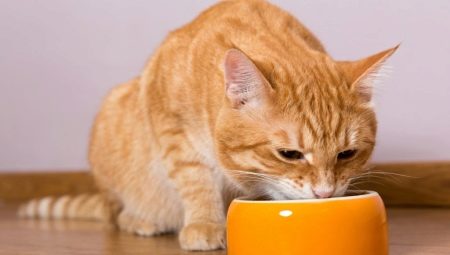It doesn’t matter what breed of cat you have, the most popular “regular domestic” or some rarer one. When choosing a feed, any owner faces a choice: how to feed his pet? There are several points to consider:
- features of the breed of your pet, what is good for his health and what is not;
- what age and gender of your kitten or an adult cat, because in the future it will probably be able to bring offspring or, on the contrary, you will sterilize your cat;
- what is your family’s daily routine, how often do you visit or are absent from home, and which household member will be responsible for the animal;
- how much money are you willing to give for his diet.
In addition, when choosing an animal's diet, it is imperative to consult a veterinarian, or at least its previous owners. And always remember that a cat, like any predator, needs meat every day, this is also due to the fact that the animal organism cannot divide food into fatty and amino acids.

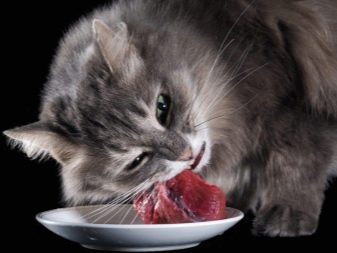
Is mixed nutrition possible?
There is a wide variety of dry and wet cat foods on the market today. They can be economy and premium, and include those or other vitamin and mineral supplements. It should be borne in mind that the lower the price of the finished feed, the lower its quality.
Some owners prefer to feed their pets natural products.
Especially for their cats, they buy fish or meat leftovers in the market. There are those who try to diversify their pet’s diet as much as possible by mixing different types of feed.
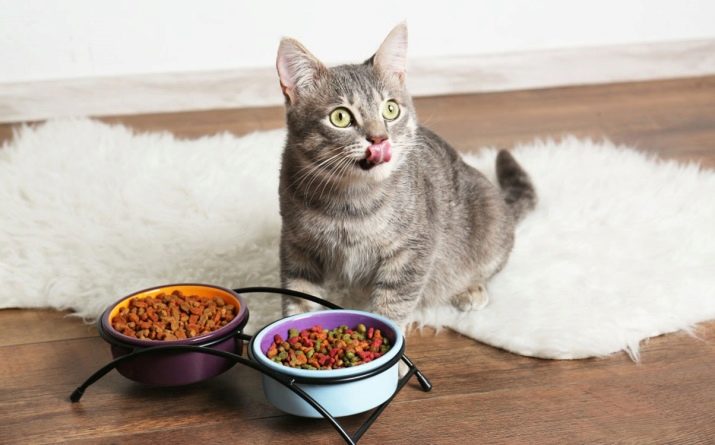
It is necessary to clarify the definition of dry, wet and natural food.
- Dry feed. The composition of dry feed includes meat and vegetable residues, if it is cheap feed. Expensive can be made from whole meat and vegetables and contain vitamin and mineral supplements. The main feature of dry food is that during the production process, pieces of food are dried and then poured with grease to add shine and aromatic odor.
They contain no more than ten percent of water, so they retain all their taste and properties for a long time. Dry food has two advantages: the first - during their use, the cat “brushes the teeth”, the tooth enamel is cleaned and strengthened. The second advantage is that they are convenient to use, you can pour enough in the bowl in the morning and add more in the evening.
But! When using dry food, the animal should always have a second bowl of clean and fresh water.
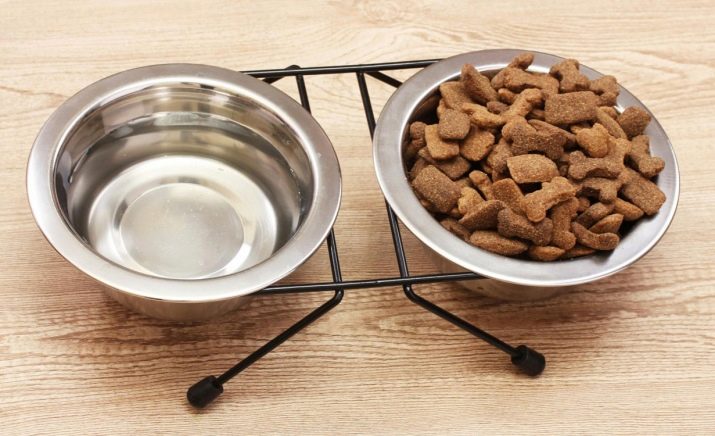
- Wet feed - This is a balanced set of meat, vegetables and offal, seasoned with sauce or jelly, but can also be found in the form of pastes. Such a set of products is pasteurized and packaged in plastic bundles or rolled up in canned food. This type of feed is more similar to natural products and can be stored after opening one or two days, no more. Their other disadvantage is that they can be harmful to the health of pets. When the remnants of food remain between the teeth, they can begin to rot, moreover, cats more and more quickly get used to this type of food.
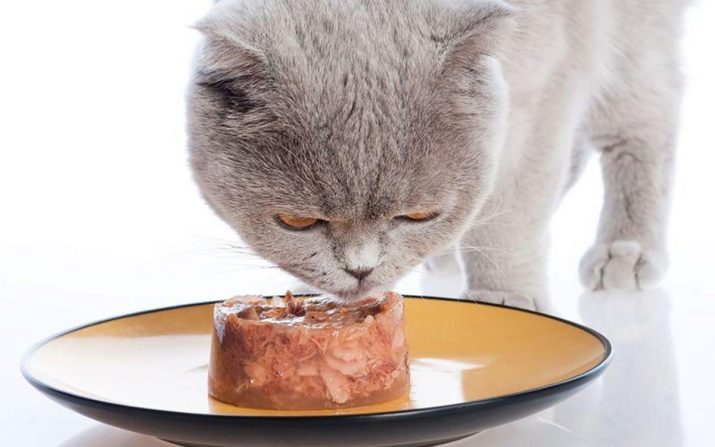
- Natural feeds mean not just food from the hosts table, but primarily a balanced diet. When compiling the right daily menu, you need to consider that the cat's diet consists of 70% protein, 20% fat and 10% carbohydrates. Do not give cats fatty types of meat, raw river fish, sweets and spices. It is also very important to eat vegetables, various types of cereals and dairy products. As for milk, contrary to the general opinion, milk should not be given to cats, it is better to use kefir or yogurt. And of course, there should always be clean water in the second bowl of the animal.


When choosing any option for feeding an animal, it is better to give food in small portions so that the cat does not overeat. And vice versa - make sure that the food does not remain in the bowl. Leftover food can become acidic and become a hotbed of many harmful bacteria and organisms.
You can combine dry and wet food from the same manufacturer for your pet - this is acceptable. When adding natural food, you should be careful and consult with specialists first. After all, the cat's body, like any other animal, reacts differently and digests what it eats. The digestive system gets used to process certain foods in a certain way, and when the animal eats something unusual, a malfunction may occur in the body.
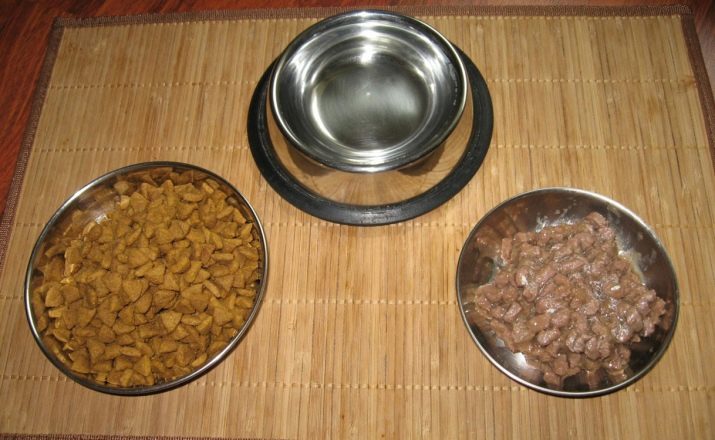
How to mix feed?
Mixing different types of food is necessary for those pets who have weak immunity or who are not gaining weight. This diet is especially good for kittens no younger than six months old. Using dry food, you can strengthen your jaws and teeth, and wet will be a source of nutrients and saturate the animal.

To correctly combine the feed, you need to alternate them two or three times during the day. The number of meals depends on the age and each individual pet. Adults are fed twice a day, kittens, as well as sick animals three or four times a day. You can choose one of two feeding options and constantly adhere to it.
- First option. Alternating dry and wet food two or three times during the day, depending on the cat. For example, an adult cat can be given wet food in the morning and dry in the evening. If you have a kitten, then in the morning and in the evening give wet food, pour it dry day and night. In both cases, be sure to place a bowl of clean water next to it.
- The second option. One day - one type of feed, the so-called one-day rule.For example, yesterday you gave a pet dry food, today you can only offer it wet, and for tomorrow boil fish or cook dairy products, then again dry food and so on, in a circle, without disturbing the order.
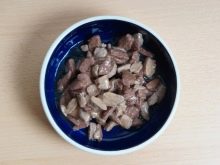
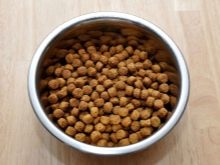
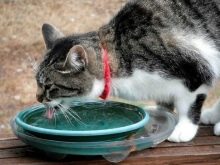
If the animal refuses this or that type of food, show patience and a little perseverance. For example, if you gave wet food in the morning and refused to dry in the evening, try again offering dry food the next morning.
If within two days you fail to “convince” the cat, it is better to seek the advice of veterinarians and stop the experiment for now.
Even when you mix different foods of the same manufacturer and of the same quality, you need to do this gradually, observing the well-being of the animal. If you see that he has become pale hair, lethargic behavior, dull eyes and any other signs, then it is better to stop combining food. These are signs of evidence that the animal’s body could not adapt to the innovation and it is better to return to the previous diet.


The pros and cons of combining them
If you still intend to diversify your pet’s diet in this way, you need to consider some points:
- control the balance of proteins, fats and carbohydrates;
- withstand the weight and volume of each serving;
- maintain the time interval between each meal so that the animal does not overeat and is not hungry;
- as noted above, use feed from one manufacturer and not lower than premium;
- do not give two types of food at the same time, even if it is a wet lump and natural food.
- clean the bowl of the animal in time, without leaving any residues from previous products in it.
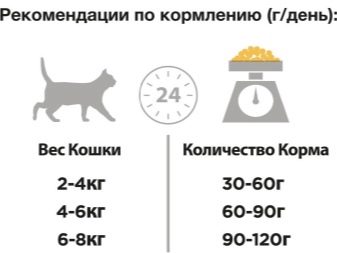
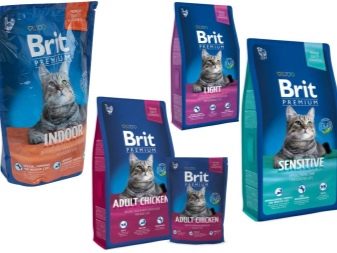
There is nothing wrong with combined nutrition if you do this with caution and constantly monitor the animal’s health. You can highlight the most obvious advantages in such a diet.
- The animal's body learns and gets used to process a variety of foods. If any unforeseen moments arise (for example, your usual food has ended, and you and your pet are visiting your parents in the village), your animal will not starve;
- Positively affects the health of the animal and prevents the appearance of various diseases, for example, urolithiasis or diseases of the gastrointestinal tract;
- Under such a regime, you can control the amount of water in the body of the animal, as well as the amount of proteins, fats and vitamins.
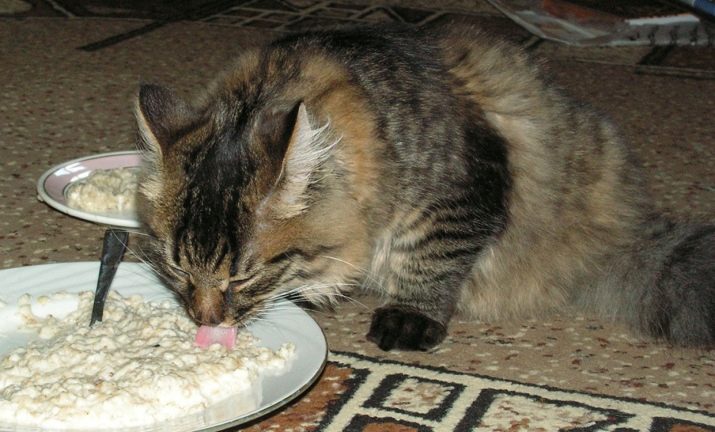
But you can highlight a number of minuses and try to avoid them.
- If the daily diet or the number of meals is incorrectly calculated, the portions are not controlled, the animal may have overeating.
- Cats prefer wet food more. If the diet is not followed, there is a high probability that she will not eat dry food, but will switch only to wet.
- An animal may be allergic to one of the components and it will be difficult to identify what exactly. The more varied the diet, the higher the risk of allergy to one of the nutritional ingredients.
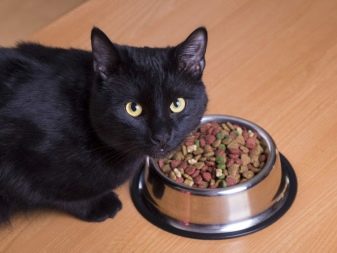
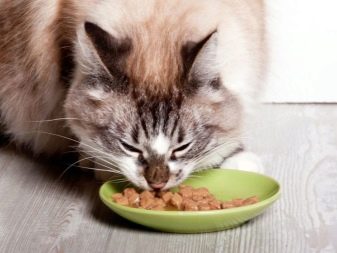
Some experts believe that you can feed a cat with both dry and wet food.
If you decide to transfer your pet to a combination of feeding, you will need to do this gradually and step by step.
But there is another opinion that it is impossible to combine wet and dry food, as this leads to digestion problems of the animal.
About whether it is possible to feed a cat with dry and wet food at the same time, see the next video.
